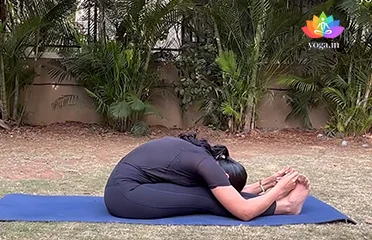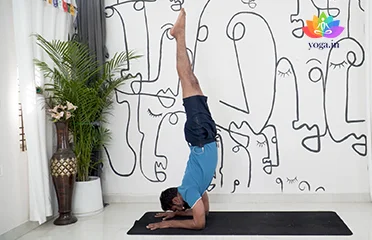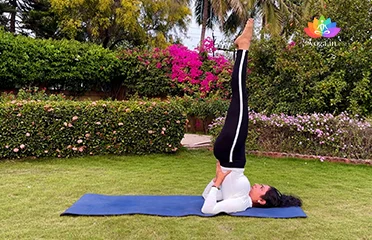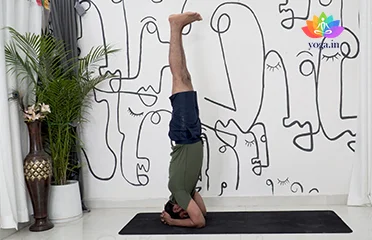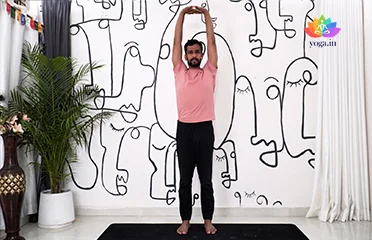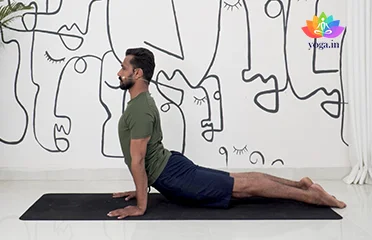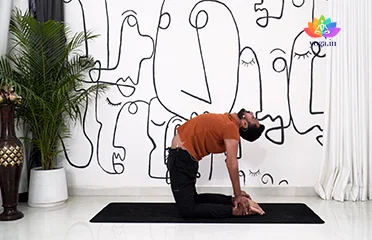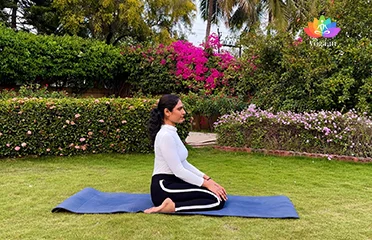Paschimottanasana (Seated Forward Bend)
पश्चिमोत्तानासन / Seated Forward Bend
The Sanskrit name is derived from three sanskrit words: Paschima (पश्चिमा) [�K]
Pincha Mayurasana (Peacock Feather Pose)
पिंचमयूरासन / Peacock Feather Pose
The Sanskrit name is derived from Pincha (पिंच) meaning feathered, Mayur [�K]
Sarvangasana (Shoulderstand)
सर्वाङ्गासनI / Shoulderstand
The Sanskrit name is derived from Sarva (सर्वाङ्ग) meaning all, [�K]
Sirsasana (Headstand)
शीर्षासन / Headstand
The Sanskrit name is derived from Sirsa (शीर्ष) meaning head and asana [�K]
Tadasana (Mountain Pose)
ताड़ासन / Mountain Pose
The sanskrit name is derived from tada (ताड़ा) meaning mountain and [�K]
Urdhva Mukha Svanasana (Upward-Facing Do
ऊर्ध्वमुखश्वानासन / Upward-Facing Dog Pose
The Sanskrit name is derived from Urdhva (ऊर्ध्व) meaning up, Mukha [�K]
Ushtrasana (Camel Pose)
उष्ट्रासनI / Camel Pose
The Sanskrit name is derived from Ushtra (उष्ट्रासनI) meaning [�K]
Virasana (Hero Pose)
वीरासन / Hero Pose
The Sanskrit name is derived from Vira (वीरा) meaning hero or a warrior [�K]
- 1
- 2
Yoga for Managing Arthritis in the Dorsal Region – A Gentle Approach
Yoga can be a valuable tool for managing arthritis in the dorsal region, also known as the upper back and spine. However, it’s crucial to approach it with caution and prioritize seeking guidance from a healthcare professional or qualified yoga therapist familiar with arthritis.
What is Arthritis?
Arthritis refers to a group of conditions characterized by inflammation and joint pain. There are various types of arthritis, and understanding yours is essential for determining suitable yoga practices.
Benefits of Yoga for Arthritis –
While yoga doesn’t cure arthritis, it can offer several benefits for managing symptoms:
- Improved Flexibility and Range of Motion: Gentle yoga poses can help maintain and improve flexibility in the upper back and spine, potentially reducing stiffness and pain.
- Pain Management: Yoga practices can promote relaxation and stress reduction, which may indirectly help manage pain perception.
- Increased Strength: Certain yoga poses can strengthen the muscles surrounding the spine, improving posture and supporting the joints.
- Enhanced Body Awareness: Yoga encourages a mindful approach to movement, allowing you to identify areas of discomfort and modify poses accordingly.
Safe Yoga Practices for Dorsal Arthritis –
Here are some general guidelines for incorporating yoga into your routine when managing dorsal arthritis:
- Focus on Gentle Movement: Prioritize gentle stretches and movements that don’t strain the upper back or spine. Avoid any poses that cause pain or discomfort.
- Maintain Proper Alignment: Focus on maintaining good posture throughout your practice. This can help protect your joints and prevent further strain.
- Modify as Needed: Don’t hesitate to modify yoga poses to suit your individual needs and limitations. Use props like blocks and bolsters for added support.
- Incorporate Breathwork: Pay attention to your breath throughout your practice. Slow and steady breathing can promote relaxation and enhance focus.
Important Considerations –
- Listen to Your Body: Always modify poses based on your comfort level and pain tolerance. Stop if you experience any pain or discomfort.
- Focus on Breath: Maintain slow and steady breathing throughout your practice to promote relaxation.
- Seek Guidance: Consult a healthcare professional or qualified yoga therapist who can create a personalized yoga practice tailored to your specific needs and limitations.
- Start Slowly: Begin with gentle poses and gradually progress as your tolerance improves.
Remember –
Yoga is a journey of self-discovery and exploration. It’s crucial to find practices that suit your individual needs and condition. While yoga can be a valuable tool in managing arthritis symptoms, prioritize professional medical advice and always prioritize your well-being.


